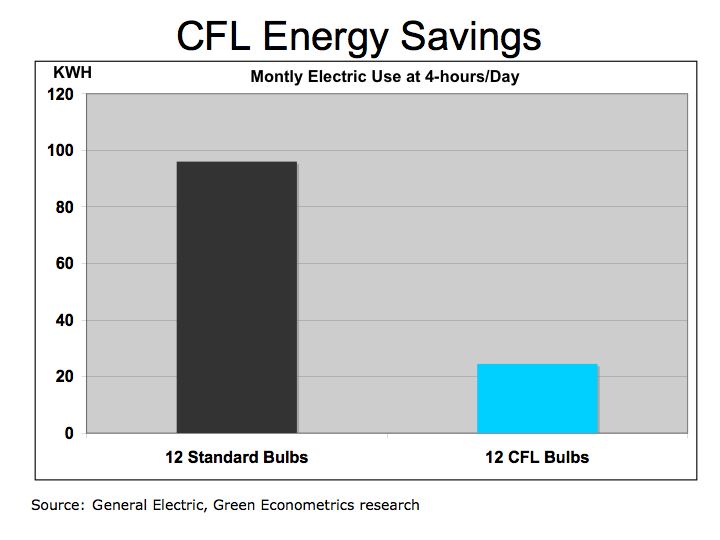A small investment produces huge savings on your electric bill
My September electric bill arrived the other day and I was interested in comparing my energy savings after swapping 60 and 100-watt light bulbs for Compact Fluorescent Light bulbs (CFL), as recommended by the U.S. Department of Energy (DOE). Our progress in migrating to solar and wind energy is moving slower than expected. The CFL bulbs were a cheap investment so last year 12 standard light bulbs (two 100-watt and ten 60-watt) for ten 60-watt and two 100-watt CFL bulbs.
The results are impressive with improving energy reductions and money savings. Energy usage as measured by kilowatt-hours (KWH) is down an average of 30% from last and attributable to CFL, outdoor solar lighting as well as electric conservation efforts. However, the savings attributable to the CFL bulbs, of nearly $8 per month equate to an impressive return on investment of over 190% in one year.
While our initial calculations suggested energy savings (for lighting) called for reductions of over 70% when switching to CFL bulbs, the electric bill reduction was not that dramatic because large appliance usage account for a larger portion of electric power bill. However, when measuring the return on investment for a fast, cheap, and easy step to lower your electric bill, the CFL produces real savings,
The CFL bulbs cost around $4.00 for either a 100-watt or 60-watt equivalent light bulb. GE’s compact fluorescent lights were installed in August 2006 at a total cost of $48.00 (12 times $4.00 a light). According to GE the 60-watt CFL used 15-watts of power and the 100-watt CFL used approximately 26-to-29 watts of power. So theoretically, energy use, assuming lights were in operation for 4 hours per day, would save about 71 KWH a month. Our electric rates are currently at $0.108 per KWH which is at par with the U.S. average rate of Electricity Prices for Households $0.104 per KWH in 2006. Therefore, the CFL bulbs are saving about $7.71 per month from our electric bill amounting to $92.50 in savings over a year. That yields an investment return of 193% on a $48 investment in CFL bulbs.
Figure 1 CFL Energy Savings
Now of course, power usage varies by household, including the diligent habits of our children, so savings will vary. The bottom line is little steps sometimes produce big results – CFL bulbs do help reduce your electric bill with a small investment and also help the environment as each 1.3 KWH reduction in power use reduces carbon dioxide (CO2) emissions by 1 pound. Coal generates about half the electric power in the U.S. and produces roughly ¾ of a pound of CO2 for every KWH of electric. That means for every 1.3 KWH of electricity used (a 100-watt light used for 13.3 hours) produces one pound of CO2. CFL help reduce CO2 emissions by approximately 1.4 pounds per bulb based on light usage of just 1-hour/day a month.
Related Posts